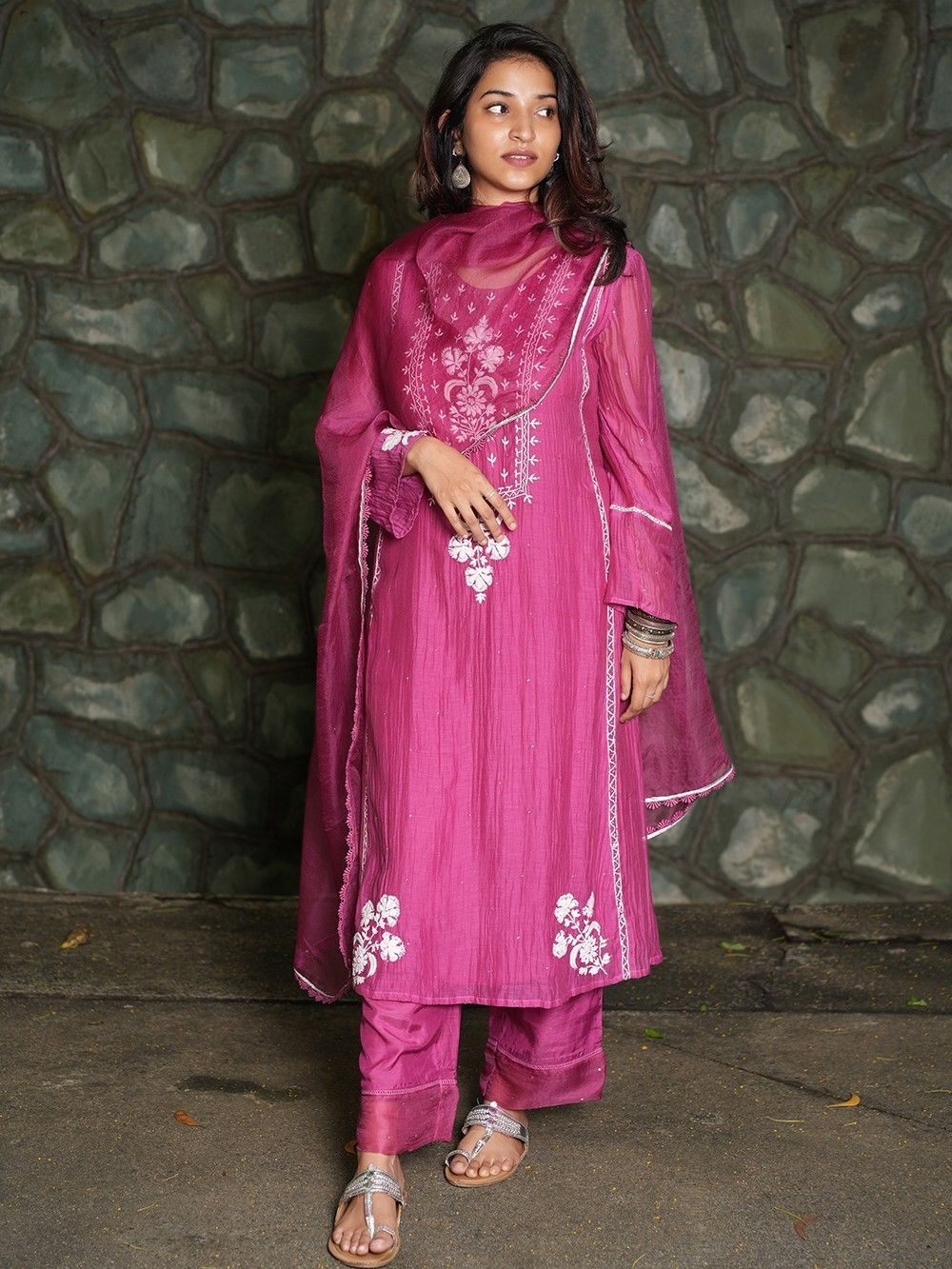Embroidery, a time-honored craft, has been an integral part of India’s rich cultural heritage for centuries. The country is renowned for its diverse embroidery techniques, each representing the exquisite craftsmanship and artistic traditions of different regions. From the delicate and intricate threadwork of Kashmir to the vibrant and colorful embellishments of Gujarat, India offers a treasure trove of embroidery styles. In this blog, we will know the fascinating world of famous Indian embroidery techniques, uncovering their unique features, historical significance, and enduring beauty.
Aari Embroidery:

Aari embroidery, also known as tambour embroidery, is a traditional form of needlework that originated in the Indian subcontinent. It is characterized by the use of a hooked needle, called an aari or tambour hook, to create intricate designs on fabric. Aari embroidery is often seen on garments like sarees, salwar suits, and bridal attire, as well as home decor items such as cushion covers and wall hangings.
Chikankari Embroidery:

Hailing from the historic city of Lucknow in Uttar Pradesh, Chikankari embroidery is celebrated for its ethereal beauty and exquisite craftsmanship. This delicate and intricate style primarily employs white threadwork on lightweight fabrics like muslin and organza. Chikankari motifs often include flowers, leaves, and paisleys, created using stitches like the shadow stitch, satin stitch, and backstitch. The elegance of Chikankari has made it a popular choice for bridal wear and formal attire.
Zardozi Embroidery:

Zardozi, which means “gold thread,” is a regal embroidery technique that originated in the Mughal era. This opulent style involves the use of metallic threads, beads, and sequins to create elaborate and ornate designs. Zardozi embroidery adorns garments like sarees, lehengas, and sherwanis, adding a touch of grandeur and splendor. Lucknow and Varanasi are prominent centers for this art form, where skilled artisans bring to life the shimmering beauty of zardozi.
Kantha Embroidery:

Kantha embroidery, originating from West Bengal and Bangladesh, is characterized by its running stitch technique. Traditionally, Kantha embroidery was done on old, worn-out sarees and dhotis, where multiple layers of fabric were stacked and stitched together using simple running stitches. This technique often depicts stories from mythology, folk tales, and rural life, creating a narrative through intricate thread work. Kantha embroidery now graces a wide range of products, including sarees, stoles, bedspreads, and cushions.
Dori Embroidery

Dori embroidery is a traditional Indian technique that showcases the exquisite artistry and cultural heritage of the country. Originating from the state of Rajasthan, Dori embroidery is characterized by the use of vibrant threads and intricate patterns, resulting in visually captivating designs.
Phulkari Embroidery:

Hailing from the vibrant state of Punjab, Phulkari embroidery is known for its colorful and exuberant appeal. Phulkari, which means “flower work,” features bold, geometric patterns created using bright-colored silk threads. Traditionally, this embroidery technique was passed down through generations, with each piece holding personal and cultural significance. Today, Phulkari finds its place in sarees, dupattas, and home décor items, reflecting the lively spirit of Punjab.
India’s famous embroidery techniques are a testament to the country’s rich artistic traditions and cultural diversity. From the intricate Kashida embroidery of Kashmir to the vibrant Phulkari of Punjab, each technique showcases the mastery and creativity of skilled artisans. These embroidery styles not only enhance the aesthetic appeal of textiles but also preserve the stories, traditions, and heritage of their respective regions. By cherishing and promoting these remarkable crafts, we ensure that the artistry of Indian embroidery continues to flourish and inspire generations to come.
